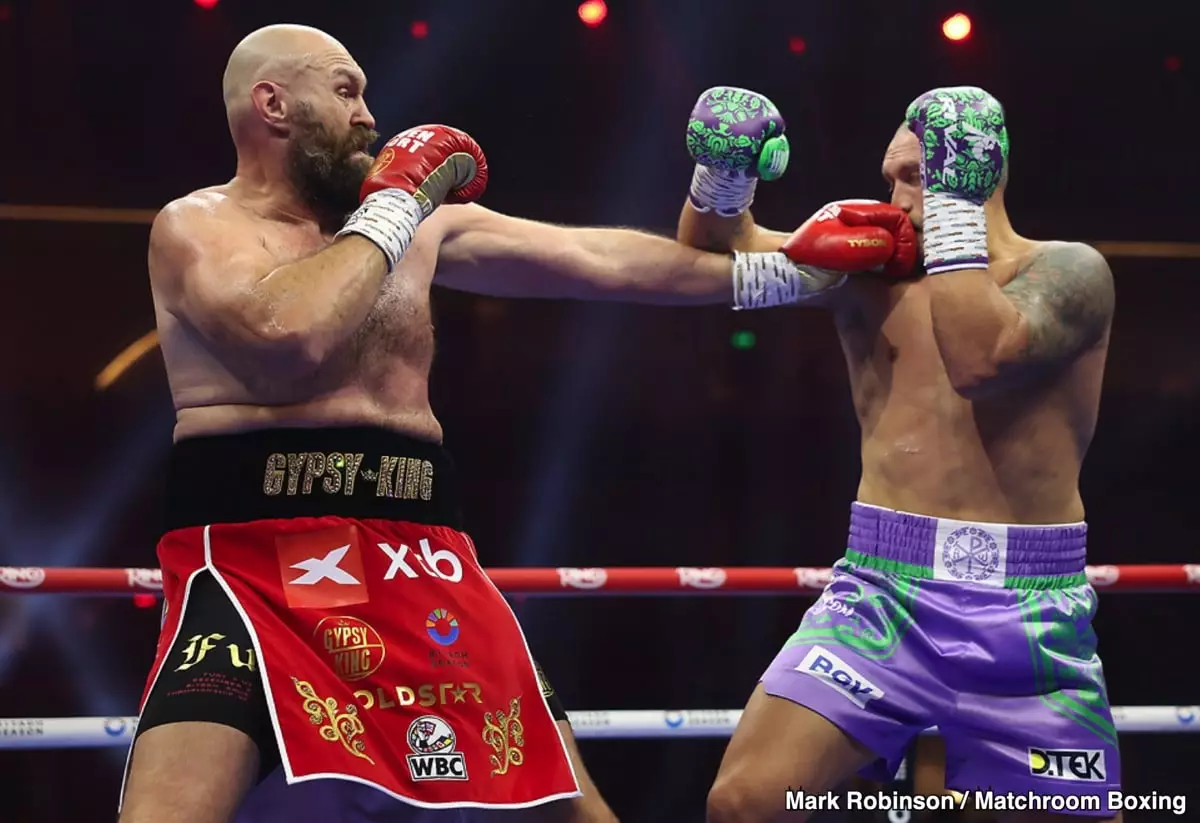Tyson Fury’s recent defeat against Oleksandr Usyk has reignited discussions about his future in boxing, particularly in regard to retirement. Former trainer Teddy Atlas has offered a compelling perspective that suggests the time is ripe for Fury, now 36, to hang up his gloves permanently. Atlas argues that Fury has already left much of himself in the ring, and continuing to compete could lead to further deterioration of both his legacy and his physical health.
Fury’s career has been punctuated by several grueling battles, many of which have taken their toll. His trilogy with Deontay Wilder alone serves as a testament to the physical and emotional strain that high-stakes fights impose on athletes. Atlas emphasizes that such encounters compress a fighter’s longevity, effectively marking their careers with wear and tear that is difficult to recover from. After two closely fought contests with Usyk, a fighter who is at the pinnacle of the heavyweight division, Fury has faced a reality check regarding his standing in the sport. Unlike his past opponents, Usyk represents a legitimate challenge—one that showcased Fury’s limitations rather than his strengths.
It’s worth noting that Fury’s past victories over fighters like Wladimir Klitschko and Deontay Wilder were often criticized for lacking the competitive edge expected at the highest level of boxing. In the eyes of many critics, including Atlas, Fury’s success was facilitated by facing opponents who were either past their prime or lacked the requisite skill set to compete at an elite level. It raises questions about what constitutes greatness in modern heavyweight boxing. Fury may have captured titles, but Atlas firmly believes he has not equated himself with the true greats of the sport.
The argument that Fury was undeserving of the “great” label is not merely a small detail; it touches on the core of Fury’s identity as a fighter. Fury’s ability to defeat lesser opponents does not translate into undisputed greatness. This view stands in stark contrast to the admiration reserved for legends like Muhammad Ali and Joe Louis. In this context, Atlas’s assessment of Fury’s retirement is not just about endings but also about how we define success and greatness in boxing.
Despite the compelling case for retirement, Atlas acknowledges that financial incentives loom large. Turki Al-Sheikh’s continued willingness to offer lucrative contracts for additional fights places Fury in the precarious position of needing to reassess what motivates him. Atlas believes Fury may be tempted to return for two to four fights, especially if those bouts promise substantial financial reward. This reality raises the question: can a fighter ever truly retire when the bouts can significantly bolster their financial future?
Atlas’s plea for Fury to retire is rooted in a genuine concern for his well-being. The risks associated with taking significant punishment in the ring extend beyond immediate loss; they can have lasting consequences which may not be visible until much later in life. Retiring when still competent could allow Fury to savor his past glories rather than tarnish them through prolonged engagement in the sport.
In concluding remarks, Teddy Atlas expresses a heartfelt wish for Fury to recognize when it is time to step back from his career and appreciates his achievements in the ring. This sentiment resonates deeply in the realm of sport, where athletes often allow their identities to be intertwined with their competitive endeavors. Recognizing when to exit can be as important as the legacy one leaves behind.
In a world where the boundaries of sport and personal well-being often blur, Fury’s situation stands as a critical case study. It invites reflections not just on the fighter himself but on the industry as a whole, including trainers, promoters, and fans, as they collectively navigate the outcome of a fighter’s choice. Ultimately, the hope is that Fury—if he does choose to retire—can find satisfaction in his career’s end, free from the shadows of decline and diminished capability.

